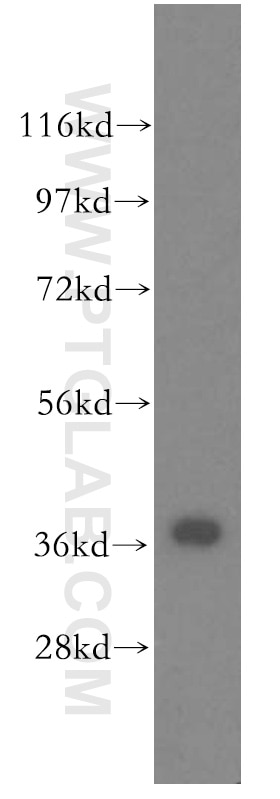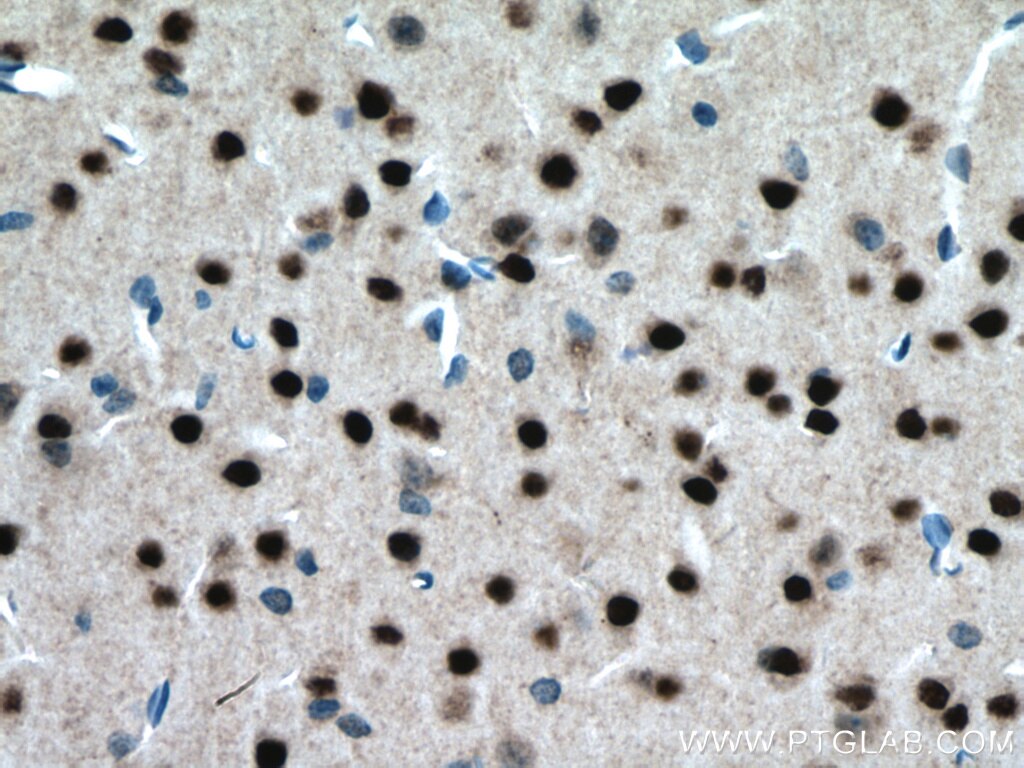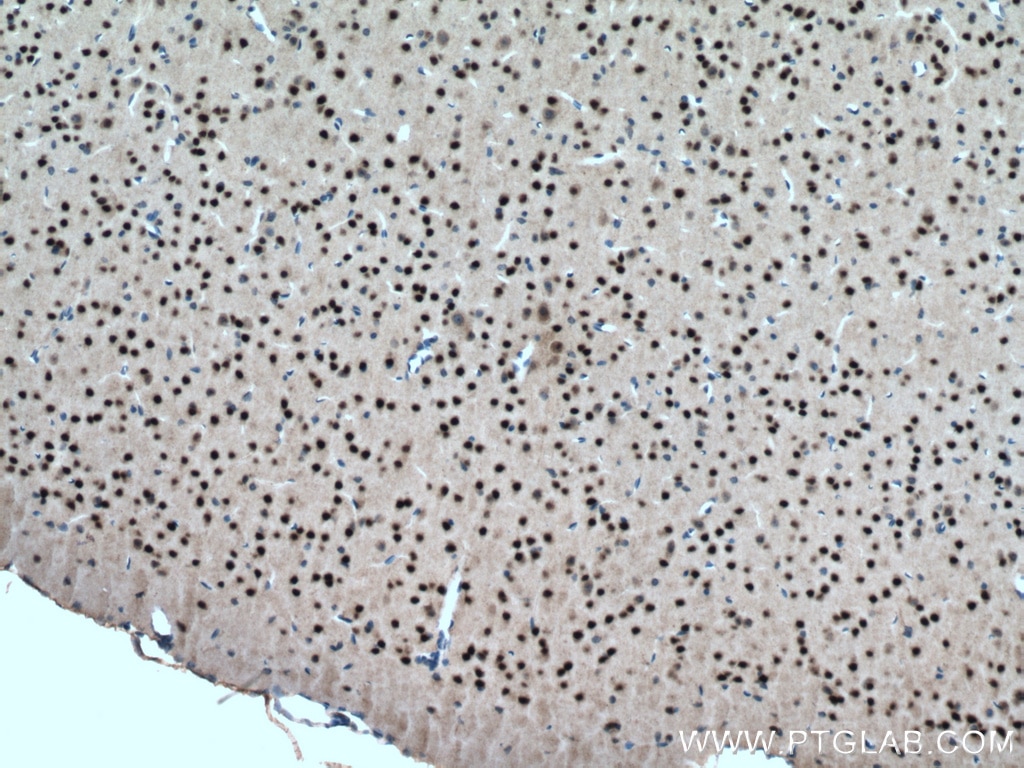Validation Data Gallery
Tested Applications
| Positive WB detected in | human brain tissue |
| Positive IHC detected in | mouse brain tissue Note: suggested antigen retrieval with TE buffer pH 9.0; (*) Alternatively, antigen retrieval may be performed with citrate buffer pH 6.0 |
Recommended dilution
| Application | Dilution |
|---|---|
| Western Blot (WB) | WB : 1:500-1:1000 |
| Immunohistochemistry (IHC) | IHC : 1:50-1:500 |
| It is recommended that this reagent should be titrated in each testing system to obtain optimal results. | |
| Sample-dependent, Check data in validation data gallery. | |
Published Applications
| WB | See 2 publications below |
| IHC | See 1 publications below |
Product Information
51003-1-AP targets ZIC4-Specific in WB, IHC, ELISA applications and shows reactivity with human, mouse samples.
| Tested Reactivity | human, mouse |
| Cited Reactivity | human, mouse |
| Host / Isotype | Rabbit / IgG |
| Class | Polyclonal |
| Type | Antibody |
| Immunogen |
Peptide 相同性解析による交差性が予測される生物種 |
| Full Name | Zic family member 4 |
| Calculated molecular weight | 37 kDa |
| Observed molecular weight | 37 kDa |
| GenBank accession number | NM_032153 |
| Gene Symbol | ZIC4 |
| Gene ID (NCBI) | 84107 |
| Conjugate | Unconjugated |
| Form | |
| Form | Liquid |
| Purification Method | Antigen affinity purification |
| UNIPROT ID | Q8N9L1 |
| Storage Buffer | PBS with 0.02% sodium azide and 50% glycerol{{ptg:BufferTemp}}7.3 |
| Storage Conditions | Store at -20°C. Aliquoting is unnecessary for -20oC storage. |
Background Information
The ZIC gene family includes 5 genes that are highly conserved across evolution. These genes encode zinc finger proteins that are expressed during development and maturation of the central nervous system and have critical roles in the development of the cerebellum. ZIC4, likes other member, may has roles in the nervous system development.
Publications
| Species | Application | Title |
|---|---|---|
Front Cell Dev Biol Neural Tube Defects and ZIC4 Hypomethylation in Relation to Polycyclic Aromatic Hydrocarbon Exposure. | ||



